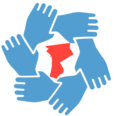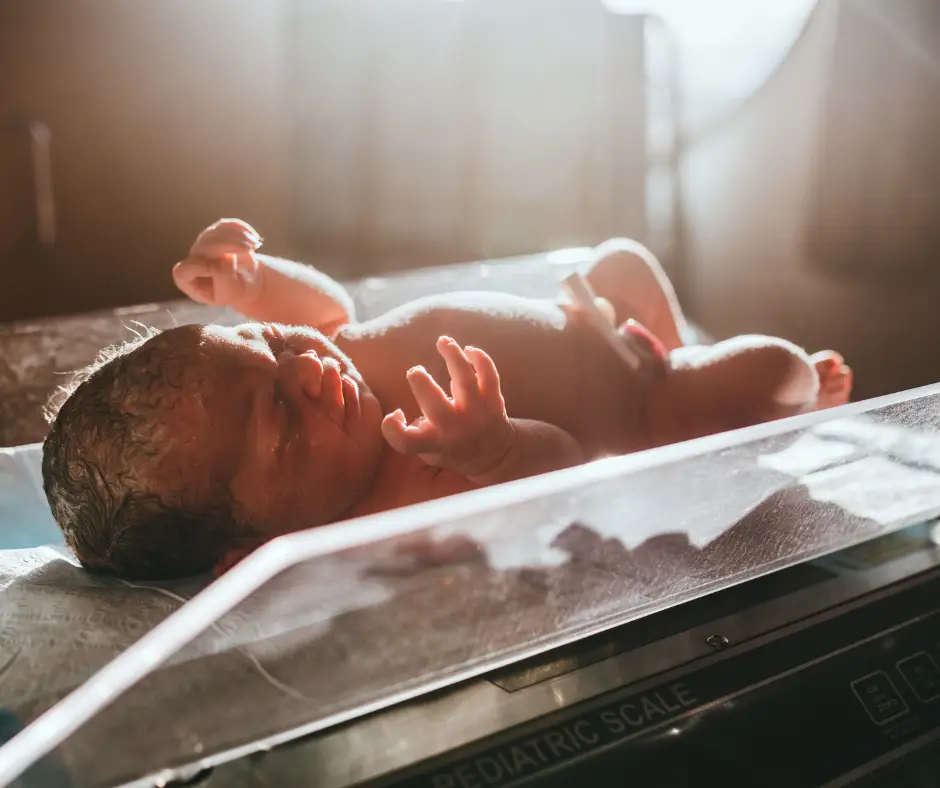
As babies grow and become more mobile, they love to explore the world—which sometimes leads to bumps, falls, and other minor injuries. While most falls and mishaps are a normal part of learning to move, there are ways to minimize serious risks and create a safe environment for your little one.
This guide will help you understand common causes of falls and injuries, how to prevent them, and when to seek medical attention—all while reminding you that you’re doing a great job keeping your baby safe!
Why Are Falls and Injuries Common in Babies and Toddlers?
Falls are the most common cause of non-fatal injuries in children under 4 years old (CDC, n.d.). Babies and toddlers are at high risk because:
- Their heads are larger in proportion to their bodies, making them top-heavy and prone to falling forward.
- They are learning to roll, crawl, pull up, and walk, often before they have full balance or coordination.
- They love to climb, grab objects, and explore places they don’t yet understand are dangerous.
Even though falls are inevitable, the good news is that most are minor. However, it’s important to reduce serious risks where possible.
Preventing Falls and Injuries at Home
Safe Spaces for Every Stage
As your baby grows, their ability to move increases quickly. Here’s how to baby-proof each stage:
Newborn to 3 Months: Prevent Falls from High Surfaces
Always keep one hand on your baby when they are on an elevated surface (changing tables, beds, couches).
Never leave your baby unattended on a changing table—even for a second.
Use safety straps on baby swings, bouncers, and car seats.
4-6 Months: Rolling and Wiggling Everywhere!
Babies start rolling suddenly—never leave them alone on a bed or couch.
Place baby on a safe surface like the floor with a soft play mat.
Avoid placing baby seats on tables or countertops—always keep them on the floor.
6-12 Months: Crawling, Pulling Up, and Cruising
Install safety gates at the top and bottom of stairs.
Keep sharp-edged furniture covered with soft protectors.
Secure heavy furniture (dressers, TVs, bookshelves) to the wall to prevent tip-overs (AAP, n.d.).
Use non-slip rugs or mats to prevent sliding accidents.
12-24 Months: Walking, Climbing, and Exploring!
Keep windows locked or fitted with window guards—screens alone won’t prevent falls.
Use doorknob covers to block access to stairs, basements, and unsafe rooms.
Watch out for furniture climbing! Toddlers love to climb onto chairs, counters, and bookshelves.
Preventing Falls and Injuries in Key Areas of the Home
Bedroom & Crib Safety
- Always use a crib with a firm mattress and fitted sheet.
- Keep crib rails up and lower the mattress as soon as your baby starts sitting up or pulling up.
Bathroom Safety
- Never leave a baby alone in the bathtub—even for a few seconds.
- Use non-slip bath mats to prevent slips.
- Always close the toilet lid and consider using a toilet lock.
Stair Safety
- Install safety gates at both the top and bottom of stairs.
- Teach toddlers to go down stairs backward on hands and knees until they can safely walk down while holding a railing.
Window Safety
- Install window guards or window stops—screens are not strong enough to prevent a fall (CPSC, n.d.).
- Keep furniture away from windows so toddlers can’t climb up and reach them.
General Home Safety
- Use corner protectors on sharp furniture.
- Keep floors free of clutter (toys, loose rugs, electrical cords).
- Ensure good lighting in hallways and staircases to prevent falls.
Outdoor Safety: Preventing Falls and Accidents
Car Seat Safety
- Always use a properly installed car seat based on your child’s age and weight (NHTSA, n.d.).
- Never leave a baby unattended in a car seat on an elevated surface (couches, counters, shopping carts).
Playground Safety
- Use playgrounds with soft ground surfaces (rubber, wood chips, or grass).
- Always supervise toddlers on swings, slides, and climbing equipment.
Wheeled Toy Safety
- When toddlers start using scooters, tricycles, or ride-on toys, make sure they wear a helmet.
- Keep wheeled toys away from driveways and streets.
When to Call the Doctor After a Fall
While most falls result in minor bruises, call your doctor if your child:
Falls from a height greater than 3-4 feet (couch, bed, crib, changing table).
Hits their head and loses consciousness, vomits, or seems very drowsy.
Has a seizure after falling.
Shows signs of a concussion (dizziness, confusion, difficulty walking).
Has a deep cut that may require stitches.
If your baby falls and seems fine, monitor them for the next 24 hours for any unusual symptoms. If you’re ever unsure, trust your instincts and call your pediatrician! (Mayo Clinic, n.d.).
Reassurance for Parents
Falls and small bumps are a normal part of babyhood. They help children learn how to move, balance, and gain confidence.
You can’t prevent every fall, and that’s okay! The goal is to reduce serious risks, not eliminate all minor tumbles.
If in doubt, call your doctor—pediatricians are always happy to help and will never think you’re overreacting.
Final Thoughts
Falls are part of growing up, and while they can be scary, most are harmless. Creating a safe home environment, supervising playtime, and knowing when to call the doctor will help keep your baby safe and happy.
Videos:
English:
Spanish:
Additional Resoruces:
CHILD SAFETY & INJURY PREVENTION PROGRAMS
1. Westchester County Department of Health – Child Injury Prevention Program
- Location: White Plains, NY
- Services: Home safety education, safe sleep practices, lead poisoning prevention, and injury risk reduction for young children
- Phone: (914) 813-5000
- Website: health.westchestergov.com
2. Putnam County Department of Health – Maternal & Infant Services
- Location: Brewster, NY
- Services: Fall and injury prevention for infants and toddlers, home safety resources, free consultations with public health nurses
- Phone: (845) 808-1390
- Website: www.putnamcountyny.com/health
3. Safe Kids Westchester (led by Maria Fareri Children’s Hospital)
- Location: Valhalla, NY
- Services: Car seat checks, fall prevention, home hazard education, burn and choking safety tips
- Phone: (914) 493-8290
- Website: www.westchestermedicalcenter.org/safe-kids
COMMUNITY HEALTH CENTERS WITH SAFETY PROGRAMS
4. Open Door Family Medical Center – Family Support Services
- Locations: Ossining, Sleepy Hollow, Mount Kisco, Port Chester, Brewster
- Services: Education for new parents on babyproofing, fall prevention tips, WIC referrals, and home visits
- Phone: (914) 941-1263
- Website: www.opendoormedical.org
5. Sun River Health (formerly HRHCare) – Pediatric and Family Services
- Locations: Peekskill, Yonkers, Poughkeepsie, and more
- Services: Fall and home safety education, toddler-proofing guidance, injury prevention counseling
- Phone: (844) 474-2273
- Website: www.sunriver.org
NONPROFIT & REFERRAL RESOURCES
6. United Way’s 211 Hudson Valley Helpline
- Coverage: Westchester and Putnam Counties
- Services: Referrals to child safety workshops, home safety supply assistance (e.g., gates, latches), and parenting resources
- Phone: 2-1-1 or 1-800-899-1479
- Website: www.hudson211.org
7. Baby Bank – Family Services of Westchester
- Location: White Plains, NY
- Services: Supplies such as safety gates, outlet covers, and non-slip mats for low-income families
- Phone: (914) 937-2320
- Website: www.fsw.org
8. Catholic Charities Community Services – NY Archdiocese
- Location: Westchester and Putnam
- Services: Family support including safety gear, parenting education, and home stability resources
- Phone: (914) 476-2700
- Website: www.catholiccharitiesny.org
CAR SEAT & HOME SAFETY EQUIPMENT RESOURCES
9. Westchester County Car Seat Safety Checks
- Partners: Local police departments & Safe Kids Coalition
- Services: Certified car seat technicians inspect and install child safety seats correctly
- Schedule: Call your local police department or check the Safe Kids calendar
- More Info: www.safekids.org
10. NewYork-Presbyterian Hudson Valley Hospital – Injury Prevention Workshops
- Location: Cortlandt Manor, NY
- Services: Infant and toddler fall prevention, home safety classes, new parent support
- Phone: (914) 737-9000
- Website: www.nyp.org/hudson-valley
Bibliography
- American Academy of Pediatrics (AAP). (n.d.). Home safety: Preventing falls and injuries in young children. Retrieved from https://www.healthychildren.org/English/safety-prevention/at-home/Pages/default.aspx
- Centers for Disease Control and Prevention (CDC). (n.d.). Preventing falls in children: Safety tips and strategies. Retrieved from https://www.cdc.gov/safechild/falls/index.html
- Consumer Product Safety Commission (CPSC). (n.d.). Window safety for children: Preventing falls. Retrieved from https://www.cpsc.gov/Safety-Education/Safety-Education-Centers/Window-Safety
- Mayo Clinic. (n.d.). First aid for falls in children: When to seek medical help. Retrieved from https://www.mayoclinic.org/first-aid/falls-in-children/first-aid-treatment/art-20056646
- National Highway Traffic Safety Administration (NHTSA). (n.d.). Car seat safety guidelines for infants and toddlers. Retrieved from https://www.nhtsa.gov/equipment/car-seats-and-booster-seats
- World Health Organization (WHO). (n.d.). Preventing childhood injuries: Global recommendations. Retrieved from https://www.who.int/news-room/fact-sheets/detail/childhood-injuries
- Johns Hopkins Medicine. (n.d.). Toddler safety: Preventing common accidents. Retrieved from https://www.hopkinsmedicine.org/health/wellness-and-prevention/soothing-a-crying-baby
- Safe Kids Worldwide. (n.d.). Fall prevention tips for babies and toddlers. Retrieved from https://www.safekids.org/tip/fall-prevention-tips
Legal Disclaimer: The information provided by our nonprofit is for informational purposes only and not a substitute for professional medical advice, diagnosis, or treatment. Always consult a qualified healthcare provider for medical concerns. We make no guarantees about the accuracy or completeness of the information and are not liable for any decisions made based on it. If you have a medical emergency, call 911 or seek immediate medical care.


